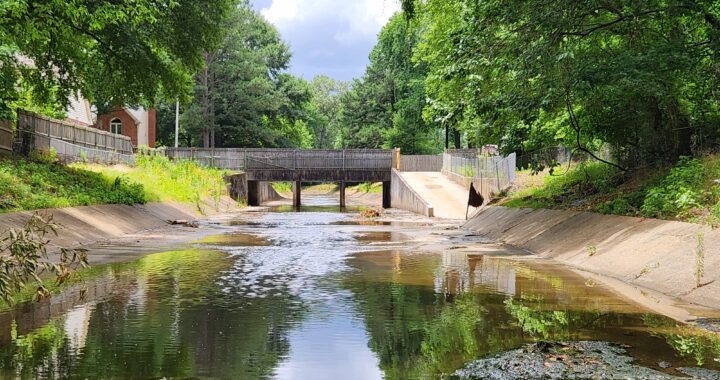The Duntreath Ditch (Lateral E) was constructed through the 70s and 80s as development occurred. Over the years, an increased intensity of rainfall events has caused stormwater runoff to overflow the concrete-lined portion of the ditch and rise onto the earthen portions of the ditch.
EnSafe began the project by performing a field evaluation of approximately 4,200 feet of the concrete-lined Duntreath channel, which traverses under two bridges. Portions of the concrete slopes had passed their functional life span, which was exacerbated due to increased stormwater runoff and additional shear velocities in the channel.
EnSafe collected data on the failing sections and cataloged the needed repairs. EnSafe then developed a design for the critical repairs, including replacing failed concrete slope panels and channel bottoms. The design also included stabilizing the earthen portions of the channel with concrete-block matting, which is experiencing erosion due to increased stormwater volumes and associated shear velocities. Furthermore, the design included retrofitted weep holes in the concrete panels to limit head pressures during fast stormwater drawdown.
The project also included a HEC-RAS model of the channel to determine stormwater runoff flows, velocities, shear stresses, and water surface elevations at different storm frequencies. The data was used to determine bank stabilization measures to prevent soil erosion, including areas around the existing bridge.
To gain more understanding of the entirety of the ditch, a 2D model was then developed to include the whole 3-mile ditch and 13 structures within it including a detention pond. The HEC-RAS modeled the existing conditions of the watershed and ditch and noted bottlenecks and deficiencies in the system that caused inundation in unfavorable areas. Based on the existing conditions deficiencies, proposed scenarios including channel regrading, upsizing structures, and storage were simulated and run to evaluate which scenario would decrease inundation in the ditch while also evaluating feasibility.
EnSafe supported the bidding process and provided construction administration throughout the construction phase. This included responding to RFIs and submittals and reviewing contractor pay applications.
Also during the construction activities, EnSafe took a leading role in engineering construction inspection, as the boots-on-the-ground personnel. EnSafe monitored the daily construction activities and verified that the work was performed in accordance with the approved plans and specifications. EnSafe's personnel worked through weekends and holidays to ensure the construction was completed in time for the grant funding deadline.
Interested in learning more about EnSafe and our work? Reach out to our experts today!
